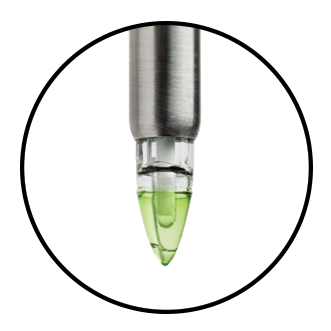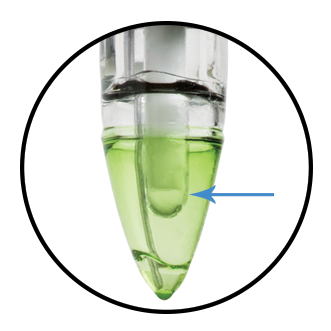pH is an essential measurement throughout the entire cheesemaking process. From the initial measurements of incoming milk to the final measurements of ripened cheese, pH is the most important parameter for cheese quality and safety control.
Acidification of milk begins with the addition of bacterial culture and rennet. The bacteria consume lactose and create lactic acid as a byproduct of fermentation. The lactic acid produced will cause the pH of the milk to go down. Once the milk reaches a particular pH, the rennet is added. The enzymes in rennet help to speed up curdling and create a firmer substance. For cheesemakers that dilute their rennet, the pH of the dilution water is also critical; water that is near pH 7 or higher can deactivate the rennet, causing problems with coagulation.
Once the curds are cut, stirred, and cooked, the liquid whey must be drained. The pH of whey at draining directly affects the composition and texture of the final cheese product. Whey that has a relatively high pH contributes to higher levels of calcium and phosphate and results in a stronger curd. Typical pH levels at draining can vary depending on the type of cheese; for example, Swiss cheese is drained between pH 6.3 and 6.5 while Cheddar cheese is drained between pH 6.0 and 6.2.
During brining, the cheese soaks up salt from the brine solution and loses excess moisture. The pH of the brine solution should be close to the pH of the cheese, ensuring equilibrium of ions like calcium and hydrogen. If there is an imbalance during brining, the final product can have rind defects, discoloration, a weakened texture, and a shorter shelf life.
Cheeses must fall within a narrow pH range to provide an optimal environment for microbial and enzymatic processes that occur during ripening. Bacterial cultures used in ripening are responsible for familiar characteristics such as the holes in Swiss cheese, the white mold on Brie rinds, and the aroma of Limburger cheese. A deviation from the ideal pH is not only detrimental to the ecology of the bacteria, but also to the cheese structure. Higher pH levels can result in cheeses that are more elastic while lower pH levels can cause brittleness.
The HI99165 uses the stainless steel FC2423 amplified pH electrode. This specialized electrode offers numerous features that improve pH testing for cheese producers. The robust stainless steel sheath paired with the conical sensing tip allows for penetration in cheese at various points throughout the production process. An integrated temperature sensor also ensures that all pH measurements are compensated for temperature without the need for a separate temperature probe.
Stainless Steel Body
The AISI 316 stainless steel body offers durability in the production facility and can withstand chloride concentrations that cause corrosion in other types of alloys..
Conic Glass Tip
The conical shaped tip design allows for penetration into solids, semi-solids, and emulsions for the direct measurement of pH in samples such as cheese.
Built-In Temperature Sensor
Errors in calibration and measurement are eliminated with the Automatic Temperature Compensation provided by the integrated temperature sensor.
Features at-a-glance
Waterproof – The HI99165 is a waterproof meter rated IP67 for immersion in up to one meter of water for 30 minutes.
Automatic Calibration – One or two-point calibration is automatic to two selectable buffer sets.
Automatic Temperature Compensation – An integrated temperature sensor allows for automatic temperature compensation of pH measurements.
Sensor Check – Using the pH‐mV range the user can check the sensor status by reading the mV reading in fresh buffers. At room temperature (25 ℃/77℉) the reading should be ±30 mV in pH 7.01 and greater than 150 mV difference between pH 7.01 and 4.01.
Multi-Level LCD Display – The split-level LCD displays both pH and temperature readings, along with indicators for reading stability, battery percentage, and probe condition.
Probe Condition Indicator – The probe condition indicator is based on the offset and slope characteristic of the electrode. There are 5 bars ranging from all 5 indicating the probe is in excellent condition and 1 bar indicating the probe should be cleaned or replaced.
Battery Error Prevention System – The meter will automatically shut off if there isn’t enough power to obtain an accurate measurement.
Battery Life Indicator – The battery percent level is displayed at start up alerting the user to the remaining battery power that is available.
Ordering info
HI99165 is supplied with FC2423 pH probe with internal temperature sensor, HI70004 pH 4.01 buffer sachet (20 mL), HI70007 pH 7.01 buffer sachet (20 mL), HI700642 electrode cleaning solution for cheese deposits sachets (2 x 20 mL), 100 ml beaker (1), batteries, calibration certificates for both meter and probe, instruction manual, and rugged thermoformed carrying case.
Purchase & Shipping
All prices are inclusive of GST and not all items are stock items, if you require an immediate solution please send an email to sales@hannainst.com.au or call us on (03) 9769 0666.
Free standard delivery: We offer free delivery within Australia on orders over $150, typically arriving within 5 to 7 days. Delivery times may vary depending on the courier service and the recipient’s location. Free shipping is not available with other offers or discounts.
Same-day dispatch: Place your order before 1 PM Monday to Friday for same-day despatch (leaves our warehouse). Delivery times may vary depending on the courier service and the recipient’s location. Subject to stock availability.
Please note that we do not offer shipping to PO Box addresses.












